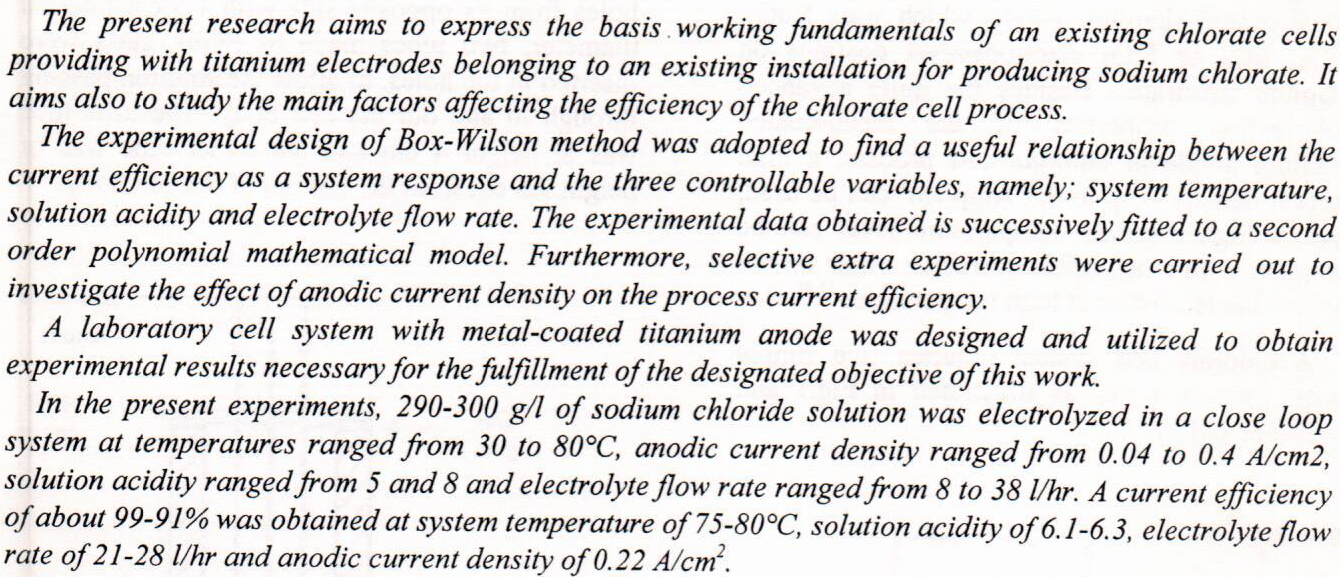
 (37)
(37)
 (33)
(33)
 (2)
(2)
Background: The miswak is a teeth cleaning twig made from a twig of the Salvadora persica tree (known as arak in Arabic).A traditional alternative to the modern toothbrush, it has a long, well-documented history and is reputed for its medicinal benefits. It also features prominently in Islamic hygienical jurisprudence. Materials and methods: Twenty maxillary first premolars were treated with the selected solutions which included siwak water extract (5%, 10%) and sodium fluoride 0.05% for 2minutes once daily for 20 days interval, deionized water was used as control negative. Then the concentration of the dissolved calcium ion in the etching solution of 2N HCL was measured. Results: The least amount of the dissolved calcium ion was registere
... Show MoreAbstract The present work aims to study the performance of reinforced compacted clay soil by sand columns stabilized with sodium silicate to obtain more solid columns than the surrounding soil. The experimental work was carried out by using a lab model to evaluate the performance of both the floating and end bearing sand columns. The results showed that the improvement ratio for the soil reinforced with sand columns stabilized with sodium silicate reached 390% for the type of floating columns and 438% for end bearing columns.
 (3)
(3)
Bacteria strain H7, which produces flocculating substances, was isolated from the soil of corn field at the College of Agriculture in Abu-Ghrib/Iraq, and identified as Bacillus subtilis by its biochemical /physiological characteristics. The biochemical analysis of the partially purified bioflocculant revealed that it was a proteoglycan composed of 93.2 % carbohydrate and 6.1 % protein. The effects of bioflocculant dosage, temperature, pH, and different salts on the flocculation activity were evaluated. The maximum flocculation activity was observed at an optimum bioflocculant dosage of 0.2 mL /10 mL (49.6%). The bioflocculant had strong thermal stability within the range of 30-80 °C, and the flocculating activity was over 50 %. The biofloc
... Show MoreFour electrodes were synthesized based on molecularly imprinted polymers (MIPs). Two MIPs were prepared by using the diclofenac sodium (DFS) as the template, 2-hydroxy ethyl metha acrylate(2-HEMA) and 2-vinyl pyridine(2-VP) as monomers as well as divinyl benzene and benzoyl peroxide as cross linker and initiator respectively. The same composition used for prepared non-imprinted polymers (NIPs) but without the template (diclofenac sodium). To prepared the membranes electrodes used different plasticizers in PVC matrix such as: tris(2-ethyl hexyl) phosphate (TEHP), tri butyl phosphate (TBP), bis(2-ethyl hexyl) adipate (BEHA) and tritolyl phosphate (TTP). The characteristics studied the slop, detection limit, life time and linearity range of DF
... Show More (11)
(11)
 (5)
(5)
This study presents a rapid, sensitive, and straightforward approach to measure chlorpheniramine maleate (CPM) by using turbidity CFIA. The method involves CPM reacting with sodium nitroprusside (Nitropress) to produce a pale white precipitate. The NAG-SSP-5S1D analyzer was used to measure turbidity at 0°–180° angle to detect the attenuation of incident light as a result of collision on the surfaces of the precipitate particles. The linear range of CPM measurements was between 0.008 and 11 m.mol/L, with correlation coefficient of 0.9983 and R2% = 99.65. The limit of detection was determined to be 0.0328 µg/sample from the lowest concentration in the calibration curve, and the repeatability of the method (RSD%) was less than 0.4% (n = 6
... Show MoreCrabs belong to the crustacean family (Decapods crustacean), and their shells contain natural ingredients from which the bioactive compounds are derived. It has been used as folklore medicine in cancer treatment. We investigate the possible anti-inflammatory and anti-oxidant effects for crab shells and whole crabs. Thirty-six rats (150–200 gm) from both sexes were used, divided into six groups, the anti-inflammatory and anti-oxidant activity measured using cotton pellet induce granuloma model. Detection of tumor necrosis factor alpha (TNF α), Interleukin 1 beta (IL-1β), superoxide (SOD), and malondialdehyde (MDA) levels using ELISA Kits. The data analysis by one-way ANOVA followed by the Tukey test. Values are significant at (p < 0.05).
... Show More